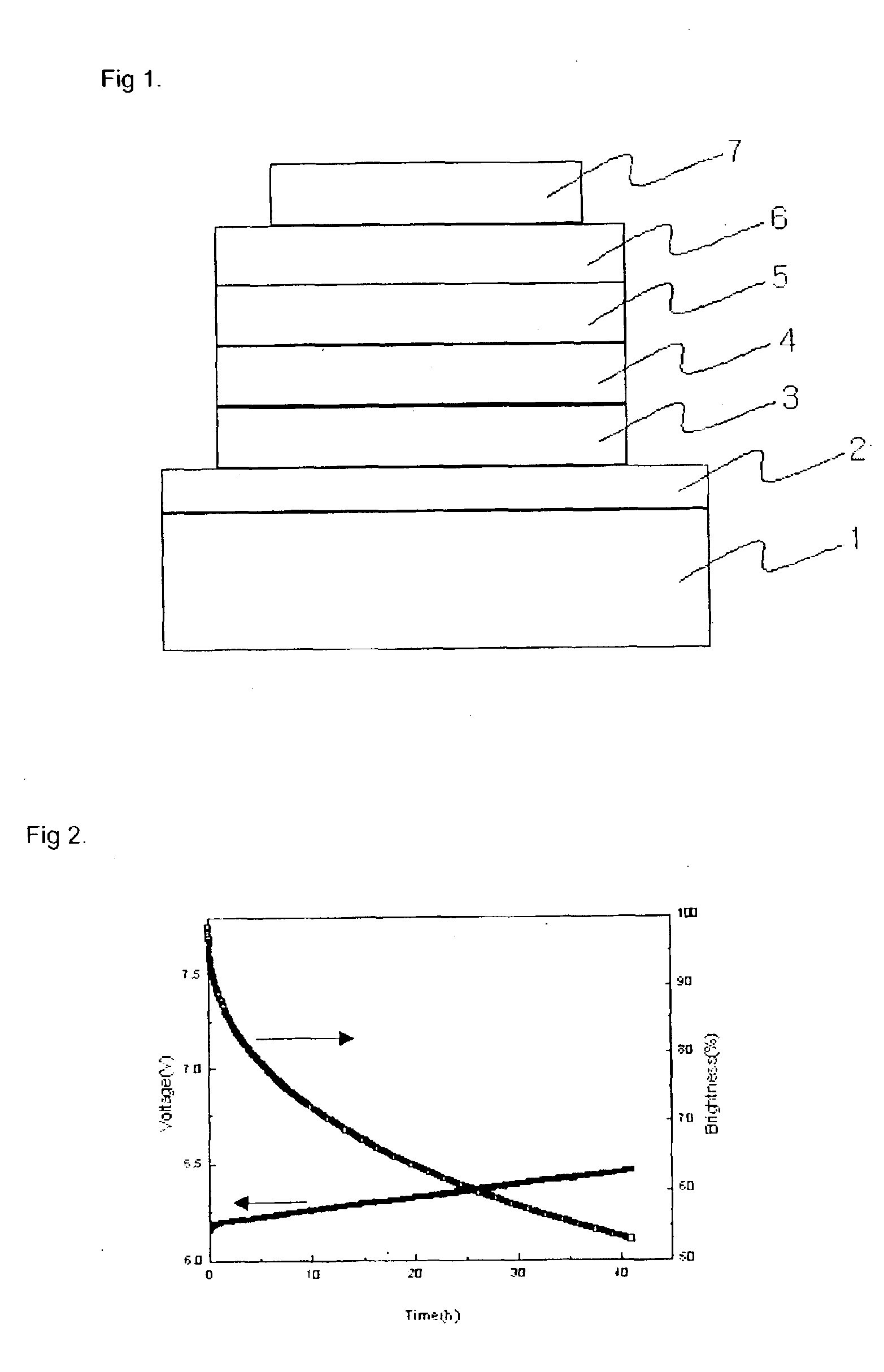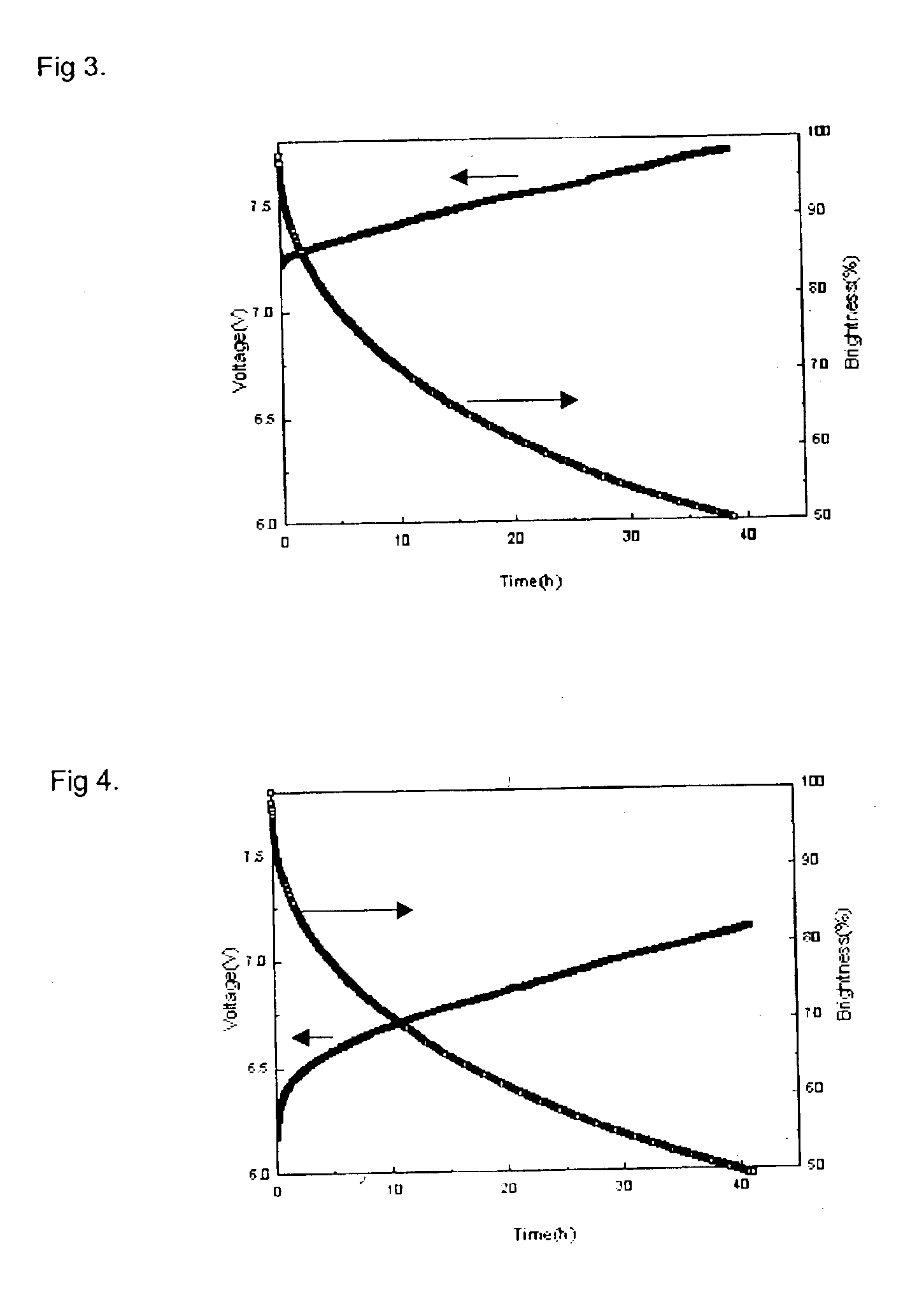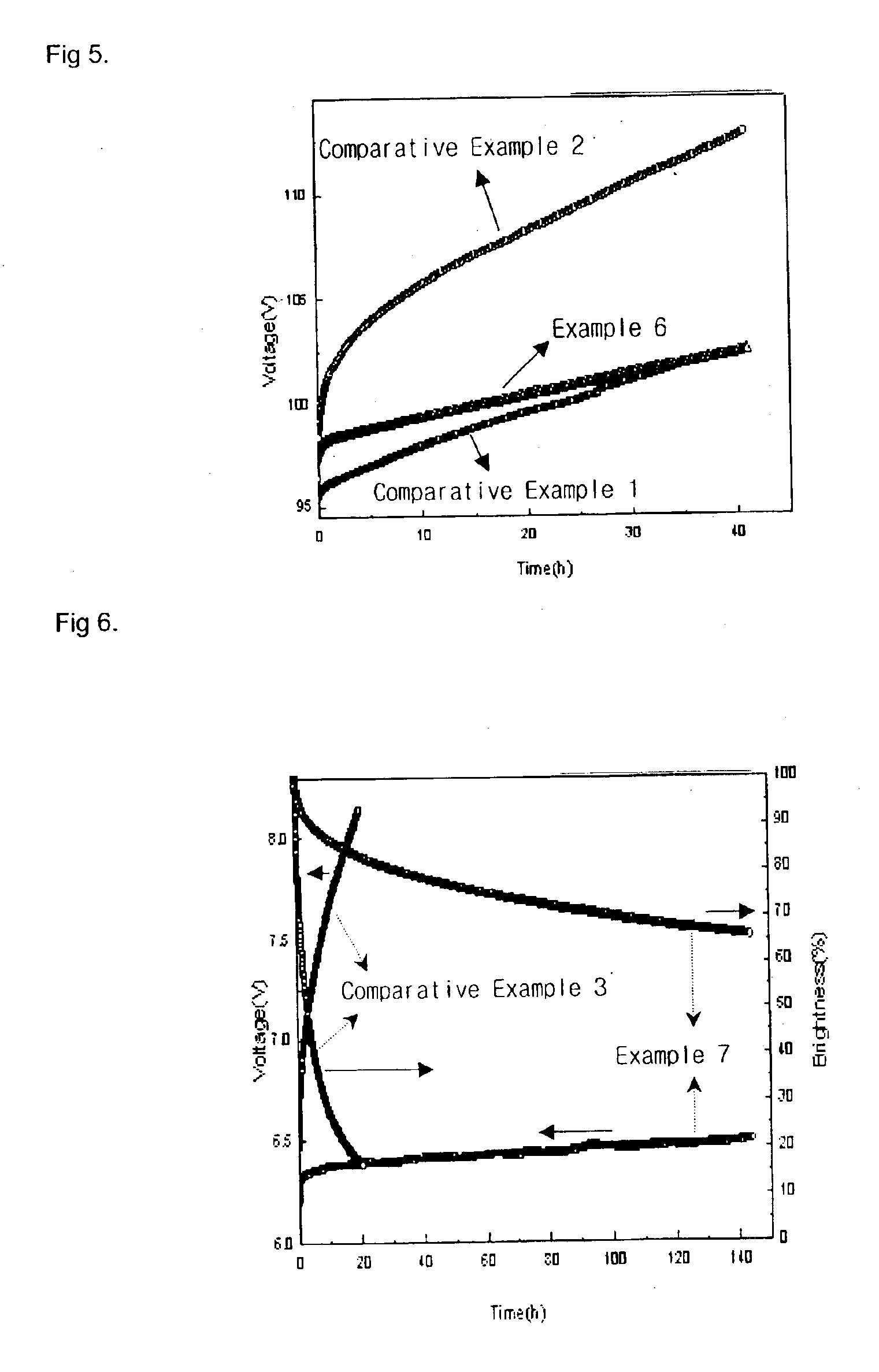Material for transporting electrons and organic electroluminescent display using the same
a technology of electron transport and organic electroluminescent display, which is applied in the field of new materials for electron transport and emitting layers, and the use of organic electroluminescent display, can solve the problems of difficult blue light emission, small number of devices have been commercialized, and small number of devices have been used. , to achieve the effect of improving the luminescence efficiency, stability and display life of the organic electroluminescent display
- Summary
- Abstract
- Description
- Claims
- Application Information
AI Technical Summary
Benefits of technology
Problems solved by technology
Method used
Image
Examples
preparation example 1
(Preparation of Starting Material Represented by Chemical Formula a)
2,6-Diaminoanthraquinone (23.8 g, 100 mmol) was dispersed in 48 wt % of a hydrogen bromide aqueous solution, and then sodium nitrite (NaNO2, 14.1 g, 204 mmol) was slowly added at 20° C. After gas evolution was completed, a solution in which copper bromide (CuBr, 29.5 g, 206 mmol) was dissolved in 48 wt % of a hydrogen bromide aqueous solution (63 mL) was slowly added together with a small amount of ethanol (50 mL). The temperature of the reaction mixture was slowly elevated and then the mixture was slowly refluxed. After cooling to room temperature, water was added to dilute the mixture, and the precipitate was filtered off with suction, washed with water, and dried in vacuo. Then it was dissolved in chloroform, filtered through a short column of silica gel, and concentrated under reduced pressure. Purification by column chromatography and recrystallization from chloroform yielded a compound of the Chemical Formula ...
preparation example 2
(Preparation of Starting Material Represented by Chemical Formula b)
2-Bromo biphenyl (8.83 mL, 51.2 mmol) was dissolved in dry THF (200 mL) under a nitrogen atmosphere and cooled to −78° C., and then t-butyl lithium (60 mL, 1.7 M pentane solution) was slowly added. After stirring at the same temperature for 40 minutes, the compound of the Chemical Formula a prepared in Preparation Example 1 (7.50 g, 20.5 mmol) was added at the same temperature. The cooling bath was removed, and the mixture was stirred at room temperature for 15 hours. Then it was quenched with diethyl ether (200 mL) and 2 N hydrochloric acid (200 mL) and stirred at room temperature for 40 minutes. The precipitate was filtered off with suction, and washed with water and ethyl ether. The obtained material was dried to obtain a compound of the Chemical Formula b (11.8 g, 85%).
preparation example 3
(Preparation of Starting Material Represented by Chemical Formula c)
A mixture of a compound of the Chemical Formula b prepared in Preparation Example 2 (4.00 g, 5.93 mmol), potassium iodide (9.85 g, 59.3 mmol), and sodium hypophosphite hydrate (10.4 g, 98.0 mmol) was refluxed in a mixture of acetic acid (80 mL) and ortho-dichlorobenzene (600 mL). After cooling to room temperature, the reaction mixture was extracted with chloroform, dried over magnesium sulfate, and concentrated under reduced pressure. The obtained solid was dissolved in chloroform, passed through a short silica gel column, and concentrated under reduced pressure. The solid was dispersed in n-hexane, agitated and filtered, and then vacuum dried to obtain a light yellow compound of the Chemical Formula c (3.30 g, 87%).
The analysis result of the compound is as follows:
m.p. 478.1; 1H NMR (300 MHz, CDCl3) 7.92 (d, J=7.6 Hz, 4H), 7.46 (t, J=8.0 Hz, 4H), 7.33 (t, J=7.4 Hz, 4H), 7.21 (d, J=7.6 Hz, 4H), 6.88 (dd, J=2.1, 8.6 ...
PUM
| Property | Measurement | Unit |
|---|---|---|
| Light | aaaaa | aaaaa |
| Aromaticity | aaaaa | aaaaa |
| Luminescence | aaaaa | aaaaa |
Abstract
Description
Claims
Application Information
 Login to View More
Login to View More - R&D
- Intellectual Property
- Life Sciences
- Materials
- Tech Scout
- Unparalleled Data Quality
- Higher Quality Content
- 60% Fewer Hallucinations
Browse by: Latest US Patents, China's latest patents, Technical Efficacy Thesaurus, Application Domain, Technology Topic, Popular Technical Reports.
© 2025 PatSnap. All rights reserved.Legal|Privacy policy|Modern Slavery Act Transparency Statement|Sitemap|About US| Contact US: help@patsnap.com



